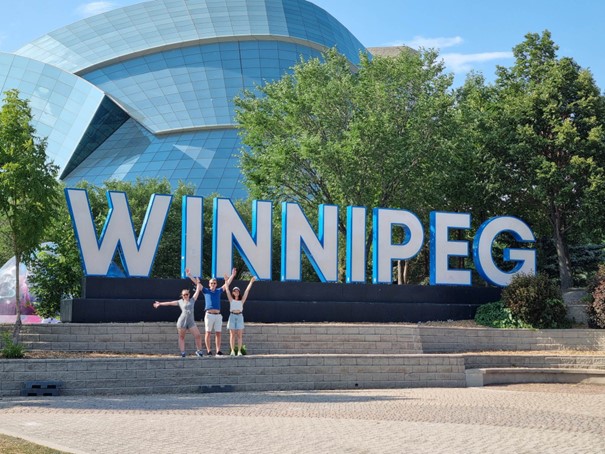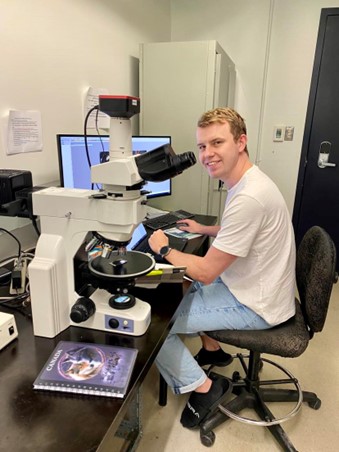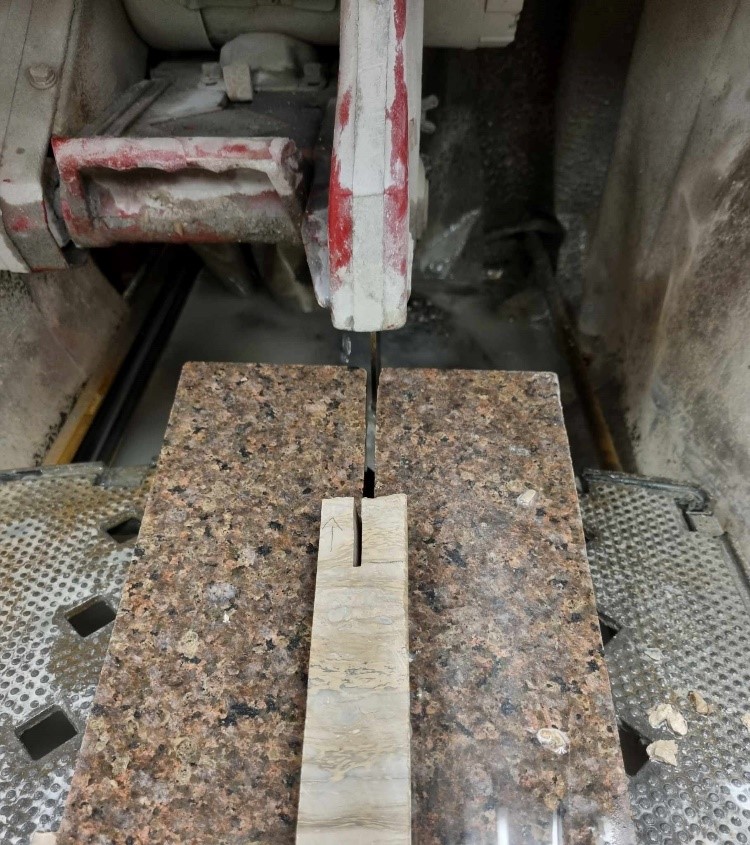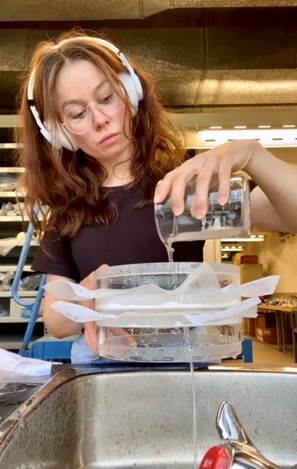Insight to the internship in Canada
Have you ever wondered how it is to have an internship in Canada? We are three students from Norway who are currently doing an internship here in Winnipeg, Canada. In this internship we have all different tasks and therefore a different perspective on the internship so far. Herman in economic geology with Stephanie Brueckner as supervisor, Maren in sedimentology with Paul Durkin as supervisor, Adriana in paleoenvironmental sedimentology with Ricardo Silva as supervisor. Together, we will share a glimpse of our unique internship experiences and the enriching journey we have embarked upon in Winnipeg.

I am Herman and throughout my internship in economic geology, my work primarily revolves around the analysis of various thin sections to gain a deeper understanding of vanadium occurrences. Vanadium is used for energy storage among other things. On a daily basis, I examine different thin sections, carefully observing and documenting the minerals present within them. This involves utilizing my knowledge of mineralogy, petrology, and microscopy to identify and characterize the minerals accurately.

With a solid background as a geoscientist, my prior knowledge plays a crucial role in performing the tasks at hand. Understanding mineralogy allows me to recognize the different minerals based on their physical properties such as colour, crystal form, and optical characteristics. Petrology provides me with insights into the origin, texture, and formation of rocks, aiding in the interpretation of the geological context surrounding vanadium occurrences. Additionally, my proficiency in microscopy allows me to navigate the intricate details of thin sections, discerning the relationships between minerals and their spatial distribution. As I work on these thin sections, I continuously expand my knowledge by encountering new minerals beyond those I already familiar with. This ongoing learning process enriches my ability to interpret the composition and geological significance of the samples accurately. Parameters such as the mineral's extinction angle, interference colours, and relief play vital roles in determining the mineral composition within thin sections, enabling me to unravel the complex mineral assemblages associated with vanadium.
Furthermore, I had the opportunity to gain an introductory understanding of the scanned electron microscope (SEM) during my internship. This advanced instrument opened up a fascinating world of high-resolution imaging and microanalysis. Although my experience with the SEM was limited, it provided me with a glimpse into the powerful capabilities of this technology. I had the privilege of exploring various samples using the SEM, which allowed me to observe their intricate features and textures in unprecedented detail. In addition to my work on thin sections, I have also taken on the responsibility of cataloguing some of the rock collection. This task involves organizing and documenting valuable geological specimens, ensuring their accessibility for future research and analysis.
Hi, my name is Adriana, and I applied to the Paleoenvironmental Sedimentology internship. Through this internship I have been able to revive forgotten knowledge, but also work using the information I have. In the beginning I was able to work with updating the posters for the evolution of life fossils in the museum exhibit. Following the museum work, I have been able to work with a sediment core and gathering samples from this. I will be working on preparing these samples for analyzing and further research. Throughout this work it has been useful having courses such as Environmental Geology, sedimentology and geochemistry. I would also recommend having a paleontology course. However, I have not had a paleontology which I think would have made things easier. Courses like these will aid in understanding how the sediment cores can tell us the impact of planetary-scale climatic and biological crises.

Apart from the courses themselves it is also good to be able to put lab experience to use and try new things. For the lab work it has been useful to have courses that include actual laboratory work. During the internship so far I have been allowed cut the core samples myself using a saw which I have not been able to do before. Being able to follow the samples taken from being to collected to analyzed, as far as possible before going home, is very exciting.
My name is Maren, and this summer I am doing a sedimentology internship at the University of Manitoba. The Rivers to Rocks (R2R) research lab where I work focuses on various projects within the field of clastic sedimentology.

The project I have been helping with studies the evolution of Late Cretaceous rivers and investigates the environmental context of dinosaur discoveries in the "badlands" of Dinosaur Provincial Park. Through the work I have done so far, I have been able to use my knowledge in sedimentology, mineralogy, and palaeontology. In the lab, I have been working with Bentonite samples collected earlier this year. The samples have been cleaned to remove unnecessary sediments. We are primarily searching for high-quality biotite but also other minerals that can be used for further analysis. Which I hopefully will be able to help with before my stay here in Winnipeg is over.
The lab work I am doing is not particularly demanding, but it has given me the opportunity to work independently and develop trust in my own skills. I have been provided with articles and other literature to help me gain a deeper understanding of the work I have been involved in and the research conducted by the R2R lab in Dinosaur Provincial Park.